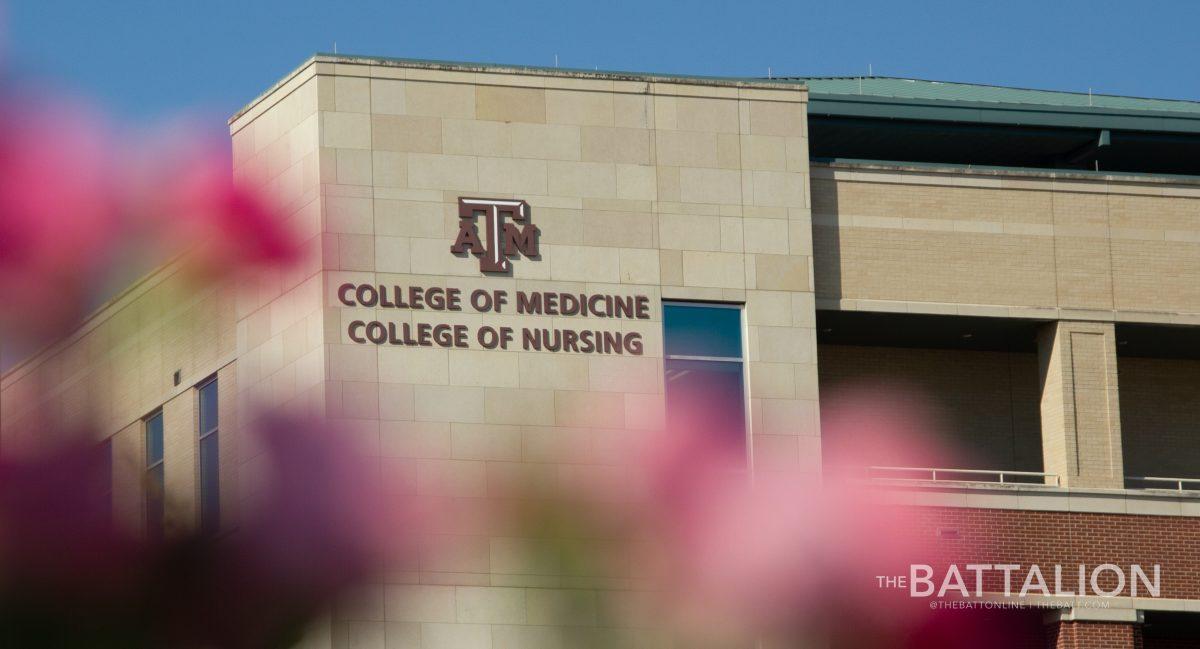An unprecedented spread of monkeypox has caught the attention of health authorities worldwide, including at Texas A&M.
Outbreaks of monkeypox, a viral disease endemic to Central and West Africa, began in May of 2022. The virus has continued to spread, with over 4,000 cases confirmed globally as of late June, according to data from the Centers for Disease Control and Prevention, or CDC. Monkeypox is transmitted primarily through close physical contact, and usually causes flu-like symptoms that precede the telltale rash. At this time, the CDC reports the threat to the general U.S. population is low.
Monkeypox is not a new disease, but has been historically overlooked as it remained largely secluded to endemic countries. Benjamin Neuman, an A&M professor of biology and chief virologist at the Texas A&M General Health Research Complex, said there have been cases every year in endemic countries, but the geographic isolation and low transmission rate have prevented previous outbreaks of this size.
“This is a virus that has been kind of on the periphery,” Neuman said. “This is something that virologists know about and have been watching, but it has remained a relatively small problem up to now.”
Neuman also said there are two major strains: one each in West and Central Africa. The less pathogenic strain, originating in West Africa, is the one which has recently gained traction.
“The strain from Central Africa generally appears to be a lot more pathogenic,” Neuman said. “It kills a much higher percentage of people, but there’s relatively little travel to and from that area, and so even though there are normally more than 1,000 cases of this a year that are detected, it generally doesn’t get out. But Nigeria is much better-connected.”
According to the CDC, monkeypox is a member of the family Poxviridae and the Orthopoxvirus genus, which includes other viruses such as the vaccinia virus and the variola virus — the causative agent for smallpox.
“If you look at the virus overall, it is pretty similar to the smallpox virus,” Neuman said. “It has a lot of the same equipment, but there’s enough evolution there that you can’t be absolutely certain about anything. You can tell it’s got the same parts, but you can’t tell that they would have necessarily the same effect on the cell or the same sort of health consequence.”
According to the World Health Organization, or WHO, it is unusual for so many confirmed cases of monkeypox to have not been linked to direct travel to an endemic area. The leading theory on the outbreaks is that transmission occurred during two European raves held in May, according to an interview by Associated Press news.
“I didn’t expect the virus to expand as much as it has,” Neuman said. “I thought it would get one wave of infection. It had the hallmarks of a virus that got very lucky … It just so happens that it was in this situation where there was sort of unprecedented access to a large number of people. So it was, wrong virus at the wrong time and the wrong place.”
Lara Dsouza, a third-year Ph.D. student at A&M and poxvirus researcher, said the lack of research on monkeypox may be due in part to the eradication of smallpox.
“That is one major reason why people have not spent more time understanding poxviruses,” Dsouza said. “Because the problem is, when there is an epidemic or a pandemic, only that is when the funding comes in and people start looking at it. By that time, the damage caused is too high.”
Zhilong Yang, an associate professor at A&M and leading professor of Dsouza’s poxvirus research lab, recently published an article in the Journal of Medical Virology entitled “Monkeypox: A potential global threat?” In the article, Yang emphasized the importance of increasing surveillance and awareness, as well as the need for monkeypox-specific treatments.
“It is fortunate that the smallpox vaccines also provide robust protection against monkeypox,” the article reads. “More intensive surveillance and research on [monkeypox virus] biology (and other closely related poxviruses), natural history, transmission, pathogenesis, host interactions, and evolution, as well as drug and vaccine development, are urgently needed to prevent uncontrollable spread and situations.”
Dsouza said funding for monkeypox research will likely increase as a result of the ongoing outbreaks, and while this may be a late response to an ongoing problem, the research itself will mark a positive change.
“Definitely people are paying more attention to poxviruses now,” Dsouza said. “We’re getting their attention, and that itself is like a positive change to understanding viruses. And not just poxvirus, any virus, or any lab working with a certain strain of virus. I think it’s important to pay attention to it, because you never know what kind of disease it can cause.”
In the meantime, Dsouza recommended A&M students to remain well-informed, be cautious of the news they consume and verify sources before spreading information.
“I think, being someone who studies poxviruses, when a news article comes to you, you read it with more caution, and you’re more well-informed, and you know what you don’t know,” Dsouza said. “As undergrad[uate]s, just be more cautious about what you read, and read as much as you can, read from everywhere, but be cautious about what you’re reading. The sources should be credible.”
On June 25, the WHO emergency committee decided not to upgrade monkeypox to the status of a global health emergency — the highest designation level the WHO can issue. As of June 28, the CDC reports 306 cases in the U.S., with seven cases in Texas. For A&M students, Neuman said it is not the time to worry.
“The danger is not high right now,” Neuman said, “but this is something that scientists are watching, and epidemiologists are watching. We’re keeping an eye on it. It’s not something you need to worry about necessarily, but there’s a lot of bad stuff out there, so be careful.”









